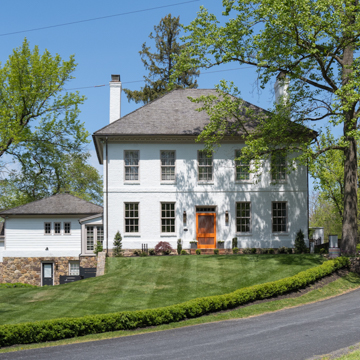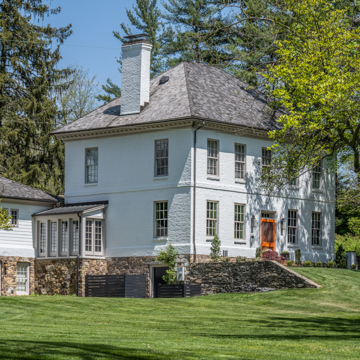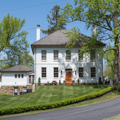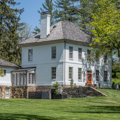This Georgian house is exceptional as a colonial-era survivor and as a sophisticated, substantial brick dwelling, erected in an era of log construction. Its symmetrical five-bay, Flemish-bond brick facade with molded-brick water table, stringcourse, modillioned cornice, hipped roof, and interior end chimneys are classic Georgian. The house was built for John Wood Jr. following his marriage to Ann Reed in 1769. His father John Wood relocated here from Cecil County when this area was still largely unsettled territory. Seeking new opportunities, Wood Sr. was the great-grandson of Augustine Herrman, a merchant and surveyor for Lord Baltimore, and thus considered a gentleman of some standing. Augustine had been compensated with the vast Bohemia plantation. John Jr. was similarly influential, commanding the Frederick Battalion of the Maryland Militia and establishing the nearby town of Woodberry (now Woodsboro). He purchased the property from John Ridout of Annapolis, who, like many, had acquired it as a warrant for investment purposes. The house and farm were later upgraded, including the construction of the brick Pennsylvania bank barn with patterned brick ventilators. The single-story stone kitchen is a rehabilitation of the original, undertaken as part of the latest restoration.
You are here
WOOD MILL FARM
If SAH Archipedia has been useful to you, please consider supporting it.
SAH Archipedia tells the story of the United States through its buildings, landscapes, and cities. This freely available resource empowers the public with authoritative knowledge that deepens their understanding and appreciation of the built environment. But the Society of Architectural Historians, which created SAH Archipedia with University of Virginia Press, needs your support to maintain the high-caliber research, writing, photography, cartography, editing, design, and programming that make SAH Archipedia a trusted online resource available to all who value the history of place, heritage tourism, and learning.












